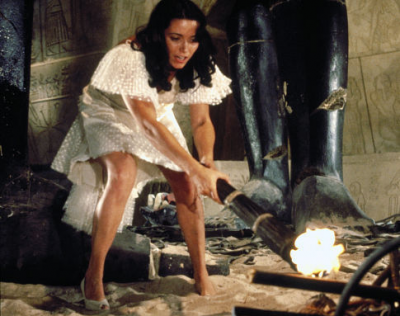-
Posts
4,121 -
Joined
-
Last visited
-
Days Won
75
Content Type
Profiles
Forums
Events
Everything posted by NIM
-
Kels a tip, who's that chick with a gun? :icon_question:
-
....Hmmm, give me a tip. I see that it's a horror but which one? :smiley_superman2:
-
Welcome to the board Steve, you gave us very nice introduction. I hope you'll enjoy it here and start visiting us continually. Cheers mate!
-
I've found last quiz we had quite interesting, so I thought to start one again. Ok, here's the shot for the first movie title question.
-
Clean Windows Vista Install - No Activation needed { for OEM versions only } I am just googling for some one and I have found a nice tutorial for Windows Vista User. So I have decided to share with you. What you need! Activation Backup & Restore Program (2.2mb) Windows Upgrade Anytime DVD or retail vista DVD Recovery DVD(s) for your computer USB Flash drive, external hard drive, or second internal hard drive Device Drivers for your computer The best place to find the most up to date drivers is the support or download area of your computer manufacturer's website. You will need drivers for your display, network card, wireless card, touchpad or mouse, chipset, modem, card reader, etc. ** Do NOT proceed unless you have recovery disk(s) and any data you want to keep backed up! ** Instructions Download the Activation Backup and Restore program above. Open the file and copy the ABR folder to your USB flash drive, external drive, or second internal hard drive. Double click activation_backup.exe. This will open a cmd window and extract the OEM Vista key. If all goes OK you will see two new files in the ABR folder. backup-cert.xrm-ms: Backed up activation backup-key.txt: Backed-up product key [*]Insert the Vista Anytime Upgrade DVD. [*]Reboot your computer. Your computer should boot to CD/DVD. If not change the option in your BIOS [*]Choose your language, Time/Currency, and country. Click Next. [*]Click on Install Now [*]The next screen is for your Vista key. DO NOT enter anything in this box. Be sure to UNCHECK the activate box. Click Next. The installation program won't believe you, so it will ask you again if you want to enter your key. Choose NO. [*]You will be asked which version of Vista you have purchased. Highlight the version that came with your computer. Check the box that says "I have selected the edition of Windows that I purchased". Click Next. [*]Accept Microsoft's license terms. Click Next. [*]Choose Custom (Advanced) Installation. [*]Choose where you want to install Vista. Disk 0 is your primary drive and where you should install. If your manufacturer has included a recovery partition you will see Disk 0 Partition 1 and Disk 0 Partition 2. Choose Partition 1. Highlight Disk 0 Partition 1 (should be the first choice. Click on Drive Options (Advanced). Choose Format. This will completely erase your old installation, including all bloatware! The default settings for formatting will be fine. This will take some time depending on the size of your drive. More experienced users my delete the recovery partition and gain back the 10GB of space. If your computer did not come with recovery disks DO NOT remove the recovery partition unless you have burnt the disks yourself! [*]The installation program will now begin copying files. [*]The installation program will reboot the computer. You can remove the DVD from the drive now. [*]Choose a username and password. [*]Choose a computer name and desktop background. [*]Choose an automatic updates option. Choose a time zone, set date and time. [*]The gears of Vista will whirl for a few moments and Vista will start! Go to Control Panel>System and Maintenance>System. You will see that Vista is NOT activated. Close this window. [*]Insert your USB flash drive and navigate to activation_restore.exe. Double click the file to start. [*]A cmd window will open and you will see it doing it's thing. It should say "Successful". Close the cmd window. [*]Go to Control Panel>System and Maintenance>System again. Notice the difference? [*]Install the device drivers you downloaded before. You will probably be asked to reboot and it is OK to do so. Be careful not to install any bloatware, or unnecessary helper applications. [*]Open Control Panel>System and Maintenance>System again. Click on Windows Experience Index half way down the window. [*]This will open the Windows Experience Index window. Click Update My Score. Vista uses this score to determine if it will be able to handle the Aero interface. There you have it! A fresh, clean Vista installation with NO extra crap. Guaranteed to make for a faster and more enjoyable computing experience! I know the instructions are lengthy, but it really on takes a fraction of the time you would spend removing the extra crap manufacturers add to a new computer. You can find complete tutorial with more images. Source: Dave's Computer :thumb_yello:
-

[Alky] Windows Sidebar Installer [August 1 2007]
NIM replied to ricktendo's topic in Windows Customization
Calm down! This forum, like any other, has rules to be followed rather than broken right? It looks bad when 2-3 posts in a row are from one person (for example, you). For that reason IPB made EDIT option which people like to use so they avoid this situations or in translation SPAM of the board. I haven't insulted you or gave you a warning, take this as a friendly advice, for the good of you and other members of this board. -
How to Integrate Vista Updates This guide shows you how to integrate Vista updates to the installation source, which is install.wim. Much of the credit for this guide goes to FireGeier. His site contains a lot of useful visual guides for automating Vista installations. It is found here: FireGeier's Unattended Vista Guide. Although others have used peimg.exe, official documentation from Microsoft's WAIK is lacking. Therefore, methods described here use Package Manager. The only place peimg.exe is used in this guide is to create a text file that lists the packages that were integrated. Requirements WAIK tools (imagex.exe, pkgmgr.exe, and supporting files); you should leave these files in the install folder (%programfiles%\Windows AIK\) and not copy them to another location. Run them from their original location so all dll's that are necessary are there. Vista DVD ISO extractor Although Windows XP is not required and you can do this in Vista, I had trouble mounting images in Vista. Therefore, I was working in Windows XP. Preparation Create a folder called 'Vista_Work'. You can call it anything you want. I have assigned it a variable %vpath% in my script so I'll refer to it as %vpath% from now on. Create folders in %vpath% called Mount, Sandbox, Updates, and Current_ISO. I've assigned them the variables %vmount%, %vsandbox%, and %vupdates%, respectively. Procedure Boot to the OS that has WAIK installed. If you installed it in Vista, you'll need to run these scripts in elevated mode. Extract install.wim from Vista installation DVD to %vpath%. Create script file called set_variables.cmd, integrate.cmd and expand.cmd in %vpath% from the following code or download them from the links: The script set_variables.cmd allows you to skip editing the scripts with your working folders path (%vpath%). They are automatically assigned based on the current working folder. You may have to change the tokens value in expand.cmd, if you are not using the English version. Change tokens=5 to tokens=4 if that's the case. If you are unsure, leave it and continue, as no damage is done. Only your Integrate.xml will not be properly formed. You'll determine if it is improperly formed in a later step. Downloads: set_variables.rarExpand.rarIntegrate.rar set_variables.com :: As long as all your folders are within one folder, you shouldn't have to change :: these paths since this batch file will assign the paths based on where :: set_variables.cmd is located. This script is called by expand.cmd & integrate.cmd :: Also, the Windows AIK folders are added to the path so you can run imagex, expand, :: and pkgmgr without pointing to those paths. @echo off CD /d %~dp0 SET vpath=%CD% SET vmount=%vpath%\Mount SET vupdates=%vpath%\Updates SET vsandbox=%vpath%\Sandbox SET path=%path%;C:\Program Files\Windows AIK\Tools\x86;C:\Program Files\Windows AIK\Tools\Servicing expand.cmd (courtesy of FireGeier) @echo off TITLE Vista Updates Expansion Process echo. :: As long as you are this script, integrate.cmd and expand.cmd are in the :: same folder, you will not have ot change your paths. CD /d %~dp0 call set_variables.cmd echo. echo Your vpath is %vpath%. If this is correct, continue. echo. pause :: Create an temporary to store expanded cab and xml files from msu files. IF NOT EXIST "%vupdates%\Temp" (MKDIR "%VUpdates%\Temp") DEL "%vupdates%\Temp\*.*" /q PUSHD "%vupdates%" FOR %%i IN (*) DO (Call :Extract %%i) :: Check for older file versions created by this batch and delete if exists. IF EXIST "%vupdates%\Temp\Integrate.xml" DEL /Q "%vupdates%\Temp\Integrate.xml" IF EXIST "%vupdates%\Temp\Sort.txt" DEL /Q "%vupdates%\Temp\Sort.txt" :: Create the first 3 lines of Integrate.xml ECHO ^<^?xml version="1.0" encoding="utf-8"?^>^ >>%VUpdates%\Temp\Integrate.xml ECHO ^<^unattend xmlns="urn:schemas-microsoft-com:unattend"^>^ >>%VUpdates%\Temp\Integrate.xml ECHO ^<^servicing^>^ >>%VUpdates%\Temp\Integrate.xml :: Create sort.txt which is necessary for compiling Integrate.xml. PUSHD "%vupdates%\Temp" del *.txt del WSUSSCAN.cab Dir /OD > Sort.txt For /F "Tokens=5" %%i IN ('FINDSTR ".cab" Sort.txt') DO Call :WriteXML %%i :: Create the last two lines of Integrate.xml. ECHO ^<^/servicing^>^ >>%VUpdates%\Temp\Integrate.xml ECHO ^<^/unattend^>^ >>%VUpdates%\Temp\Integrate.xml echo. echo Finished extracting MSU's and compiling Integrate.xml. echo Check Integrate.xml to see if it is well-formed before continuing echo to use Integrate.cmd to begin the integration process. echo. pause ::---------------------------------------------------------------------------- :: SUB PROCEDURES & PARTS EXECUTED OPTIONAL ::---------------------------------------------------------------------------- :: Extract subroutine extracts the msu files for the necessary cab and xml files. :Extract START "Expand" /WAIT expand.exe %1 -f:* "%vupdates%\Temp" GOTO :EOF :: WriteXML subroutine writes entries into Integrate.xml, which are specified by the name of :: coresponding cab file. This is the command line, which will call the installation of the :: cab during pkgmgr procedure later. :WriteXML IF "%1"=="WSUSSCAN.cab" Goto :EOF SET Name=%1 IF ".%Name%"=="." GOTO :EOF SET XML=%Name:~0,-4%.xml SET Cab=%Name:~0,-4%.cab ECHO ^<^package action="install"^>^ >>%vupdates%\Temp\Integrate.xml FOR /F "Tokens=*" %%i IN ('FINDSTR "assemblyIdentity" %XML%') DO (Echo %%i >>%vupdates%\Temp\Integrate.xml) ECHO ^<^source location="%vupdates%\Temp\%Cab%" /^>^ >>%VUpdates%\Temp\Integrate.xml ECHO ^<^/package^>^ >>%vupdates%\Temp\Integrate.xml :EOF Integrate.cmd @echo off TITLE Vista Updates Integration Process CD /d %~dp0 call set_variables.cmd echo. echo Your vpath is %vpath%. If this is correct, continue. echo. pause echo. echo Before beginning, please choose the version of Vista you want to update. echo. :SELECT_VER set choice= set /p choice=Choose 1 for Business, 2 for HomeBasic, 3 for HomePremium, or 4 for Ultimate: if not '%choice%'=='' set choice=%choice:~0,1% if '%choice%'=='1' goto BUS if '%choice%'=='2' goto HB if '%choice%'=='3' goto HP if '%choice%'=='4' goto ULT echo. ECHO "%choice%" invalid! Try again... ECHO. GOTO SELECT_VER :BUS SET VERSION=1 SET type=Business GOTO STEP_1 :HB SET VERSION=2 SET type=HomeBasic GOTO STEP_1 :HP SET VERSION=3 SET type=HomePremium GOTO STEP_1 :ULT SET VERSION=4 SET type=Ultimate GOTO STEP_1 :STEP_1 REM MOUNT A READ-WRITE IMAGE OF THE CHOSEN VISTA VERSION imagex.exe /mountrw "%vpath%\install.wim" %VERSION% "%vmount%" ECHO. ECHO Press any key to begin integration of updates. Once you start the process. echo you should not cancel it. Make sure you are ready before continuing. echo. PAUSE echo Starting integration. This can take several minutes. Please wait until it finishes. echo on START "Starting Package Manager" /WAIT pkgmgr.exe /o:"%vmount%;%vmount%\Windows" /n:"%vupdates%\Temp\Integrate.xml" /s:"%vsandbox%" /l:"%vpath%\integrate.txt" echo. echo The errorlevel is: %errorlevel%. echo. echo An errorlevel of 0 indicates successful integration. Press any key to save a echo list of installed packages to a text file. ECHO. pause echo off peimg.exe /list /image="%vmount%\Windows" >> "%vpath%\Current_ISO\updates_installed_%version%_%type%.txt" echo. echo The Sandbox folder should be cleared whether integration was successful or not. echo. pause REM Delete, then recreate the folder rd "%vsandbox%" /s /q mkdir "%vsandbox%" echo. echo Now, we are ready to commit changes and unmount. Selection an option to echo unmount while committing or not committing changes. echo. echo Once you commit, the process can take several minutes as the changes are echo saved to your installation source. ECHO. :SELECT_COMMIT set choice= set /p choice=Choose Y to commit changes. Choose N to abandon changes: if not '%choice%'=='' set choice=%choice:~0,1% if '%choice%'=='Y' goto COMMIT if '%choice%'=='y' goto COMMIT if '%choice%'=='N' goto ABANDON if '%choice%'=='n' goto ABANDON echo. ECHO "%choice%" invalid! Try again... ECHO. GOTO SELECT_COMMIT :COMMIT imagex.exe /unmount /commit "%vmount%" goto END :ABANDON imagex.exe /unmount "%vmount%" goto end :END echo. echo Done. Press any key to exit. echo. Pause Copy all of your MSU updates to the %vupdates% folder. Execute expand.cmd. Expand.cmd will extract the .cab and .xml files from the .msu files in a temporary folder called Temp in %vupdates%. It also compiles a file called Integrate.xml, a necessary file for integration. Note: do not change the spacing in expand.cmd. Some spaces are necessary to build a proper structure for Integrate.xml. [*]Examine this file (Integrate.xml) using Notepad. It should have as many entries as there are updates of the following nature: Integrate.xml sample (partial) <?xml version="1.0" encoding="utf-8"?> <unattend xmlns="urn:schemas-microsoft-com:unattend"> <servicing> <package action="install"> <assemblyIdentity name="Package_for_KB928089" version="6.0.1.1" language="neutral" processorArchitecture="x86" publicKeyToken="xxxxxxxxxxxxxxx"/> <source location="E:\Vista_Work\Updates\Temp\Windows6.0-KB928089-x86.cab" /> </package> ... and so on If your file is bare, you may need to change tokens=5 to tokens=4 in expand.cmd. [*]Execute integrate.cmd once you determine your xml is good. It will prompt you through the steps. Note that if you were successful, you should get an errorlevel of 0. The script will also create a file called Updates_Installed_%#%_%type%.txt, where # and type correspond to the Vista version number (1 to 4) and type (Business, Home Basic, Home Premium, or Ultimate), respectively. This is only for the purpose of auto-generating a text file that shows all the updates. The official way of checking integrated updates is described in step 8. NOTE: You will have to install updates to each version of Vista separately. So, you can repeat integrate.cmd for each version by running integrate.cmd and choosing to mount a different version. NOTE: You don't have to repeat expand.cmd for each version, only integrate.cmd. The script empties the Sandbox folder automatically but does not delete the cab files that are expanded in Temp folder. You can manually delete the cab files later if you prefer. [*]Start WSIM and open your updated install.wim. If you are asked to create a new catalog file as the current one is missing or outdated, go ahead and create a new catalog file. You will see your packages automatically assigned as either hotfixes, updates, or security updates in the directory structure of Packages. NOTE: This is the official method to check whether your packages were installed. We used peimg only to make a text file that does that automatically for step 9. You'll have to create a new catalog file for each version of Vista if you want to update it in your ISO. [*]Inject install.wim back into the ISO if you committed changes to finish the process. You may also inject updates_installed_#_type.txt if you want to know which updates are contained in the ISO image. You can also use Microsoft's utility to rebuild the bootable ISO but that involves extracting ALL the files from the DVD, not just install.wim. Therefore, it's easier to use an ISO utility than Microsoft's utility. Injecting the catalog file is options as it is not used by setup. THX to SPACESURFER
-
Second is good also 'cause it reminds at WMP11 but I dislike that speakers...
-
The first one looks excellent for Vista. Thanks. :thumb_yello:
-

[Alky] Windows Sidebar Installer [August 1 2007]
NIM replied to ricktendo's topic in Windows Customization
Ahh, I see, you like to spam the board. :hatespam: -

[Alky] Windows Sidebar Installer [August 1 2007]
NIM replied to ricktendo's topic in Windows Customization
windowsguy, please use the edit button if you have something to add to your previous post to avoid spamming the board. Thx.. :icon_rolleyes: -
It looks like you'll be finalist in this month mate :thumb_yello: BTW, you're still faithful to our Mayhem theme
-
LoL Rick, no, you can change only one letter at a time. I'll continue from the first word.. FORT
-

Skin packs - BricoPack Vista Inspirat Ultimate 2 for Windows XP
NIM replied to sero's topic in Microsoft Windows XP
Please note that warez is forbidden here and could result in a permanent ban! You should check the rules :rtfm: -
Change one letter to create a new word. For example: GAME TAME TAKE etc.. You can't repeat an already used word. Quote only the words before you to make sure no word is repeated. Let's see how long it can last. Here's the starting word: FORM Here are some rules to follow: 1. Use only FOUR lettered word. 2. You can only change ONE letter at a time. 3. ALWAYS BOLD the letter you have CHANGED. 4. In each post quote all of the words used so far with your added to the list. 5. Please don't use any vulgar words. 5. Most Important: Use CTRL+F to search the page if the word you're goin' to use has already been used. 6. You're free to use a word in some sentence of yours, so it's a bit more interesting.
-
I vote for ricks, pure Vista look :thumb_yello:
-
So Maverick's a winner for last month, Wolf update his sig please :icon_rolleyes:
-
Show us your changes from the last month.. :a056:
-
You have to select option HTML On during your posting screen :icon_rolleyes:


